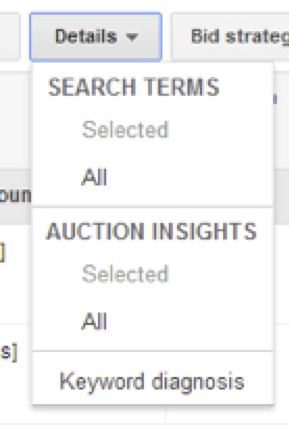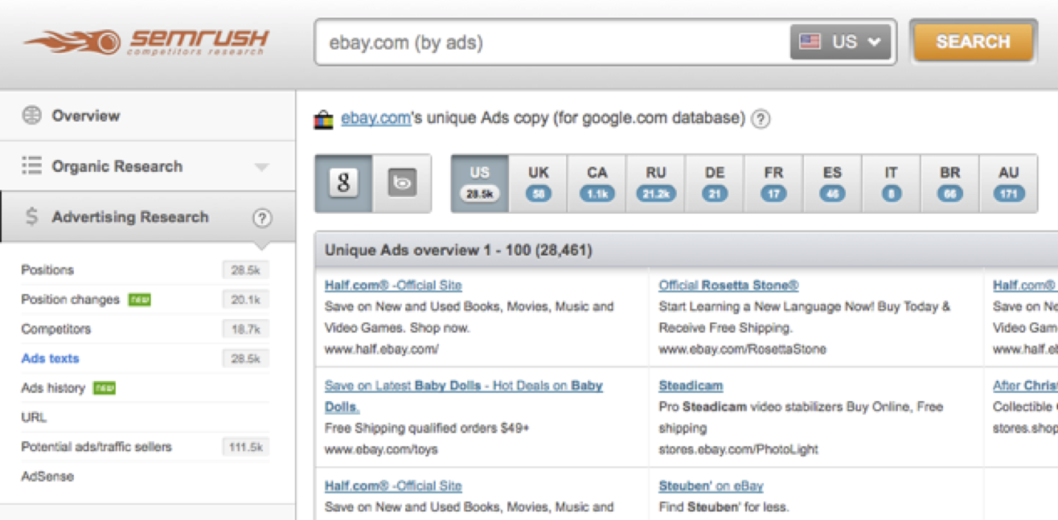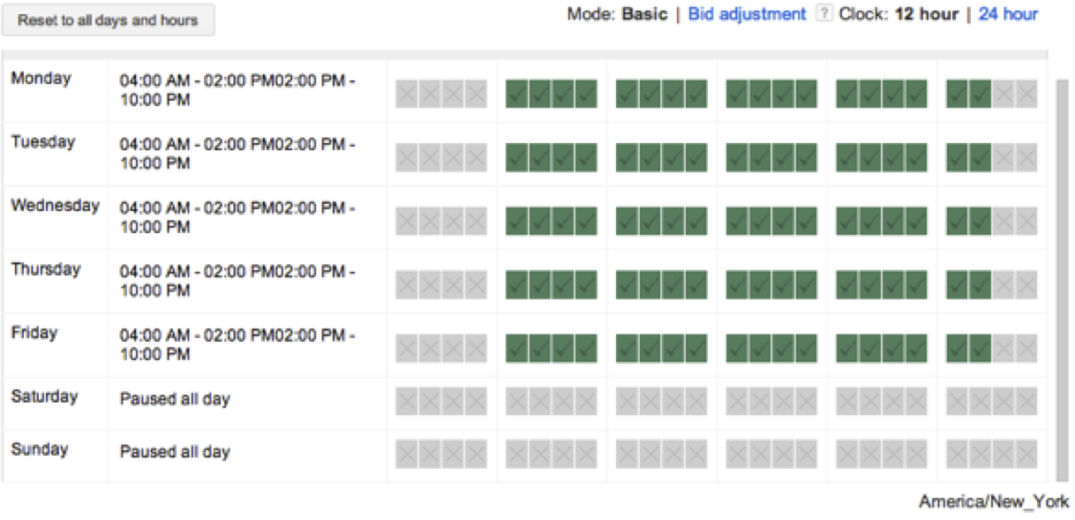Pay-pay-click (PPC) is a competitive space for many verticals. Some big brands have deep, almost endless, pockets that make it hard for the companies with small budgets to compete. Well fear no more my small budgeted friends! Below I will cover how to get champagne results on a beer budget and share in the wealth of the PPC pie by covering 5 competitor strategies for small budgets.
A small budget may make you think like an underdog, but all that really means is that you need to work smarter. The first step in working smarter and competing with your big budgeted competitors is to do your research and understand who is your competition.
1. Competitive Research and Analysis
Start with researching the competitive PPC landscape. Here is a list of several competitive tools.
AdWords’ Auction Insights tool is a free tool available in the AdWords interface and a good place to start understanding your competitive landscape on Google.
Another tool I prefer is SEMrush because it offers info for both AdWords and Bing. This tool allows several searches for free but then will ask you to sign up after a few searches. Once you’ve selected your competitive research tool, start to analyze your competitors, what keywords they bid on, budget, and what ads they are running. All of this information will help you build a super savvy competitive strategy.
For example, if you see your big budgeted competitor is running a 10% off ad, maybe you run a 20% off ad. Or maybe they are bidding on another term that you don’t have in your account that has a lower average CPC. Using all the information you can grab from these competitive research tools will help you develop an impactful strategy.
2. Bid On Competitor Terms
Bidding on your big budgeted competitor terms can be a great way to piggyback off their brand terms. Typically these campaigns convert well because the user has done their research and ready to purchase. However, there are some downfalls to bidding on competitor terms.
These campaigns typically have lower quality scores because they aren’t as relevant to your landing page. In addition, if you start bidding on a competitor’s brand terms, they could start bidding on yours, which could start to increase your average CPCs on your own brand terms.
Also, be very, very careful of DKI ads! Google will allow you to bid on competitor terms but you may not use another brand name in your ad copy. If you are using DKI ads, you could show competitor brand terms in your ad copy, which could potentially lead to a legal action. Moral of the story is to bid on competitor brand terms with caution and do not use DKI ads!
3. Remarketing Lists for Search Ads
Now that you’ve done your research, you have an idea of what high volume keywords your competitors are bidding on. The problem is that they may be way more expensive than you can afford. Remarketing Lists for Search Ads (RLSA) are a great way for you to compete with the big budgeted competitors on keywords that you find valuable.
RLSA allows you to show ads to users that have previously visited your site while they continue to search on the Google Search Network. Since these users have already shown interest in your site and there is a smaller audience, the price of those competitive terms becomes more tolerable to your budget.
4. Ad Scheduling
Let’s say you don’t have enough cookied users on your search remarketing list yet to use RLSA. The next best option for competing on these competitive terms is using ad scheduling.
Take one of the competitive terms, go to your dimensions tab and analyze performance by hour of the day and day of the week. This analysis will give you a better idea of when it makes most sense for you to attempt to compete on these terms.
Maybe you notice that between 4am-2pm there is not as much traffic and the conversions are less expensive. Or maybe you go the other route where you choose to only compete during the prime-time part of the day and bailout all together the rest of the day. Implementing ad scheduling can help stretch that shoestring budget.
5. Gmail Sponsored Ads
Gmail Sponsored Ads are another Google product that can be used in competitor strategies by bidding on specific competitor terms. This strategy will allow your Gmail Sponsored Ads to show up in user email whenever someone mentions a competitor term you have selected to bid on. Unlike Display AdSense text ads that take the user directly to a landing page, all Gmail Sponsored ads, including those in the Promotions tab, open a screen like the one below.
Gmail Sponsored Promotions ads are priced on a cost-per-click basis. Advertisers are only charged the first time an ad is clicked and aren’t charged for actions taken from the promotional message. The program has been running in limited beta for some time now; interested advertisers can contact their Google reps to request inclusion.








